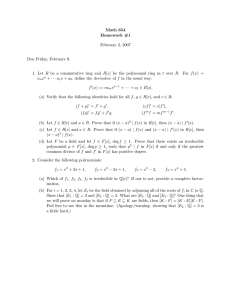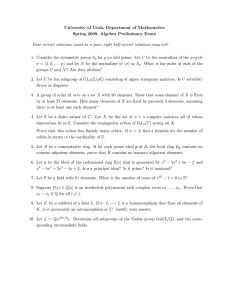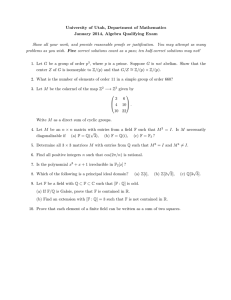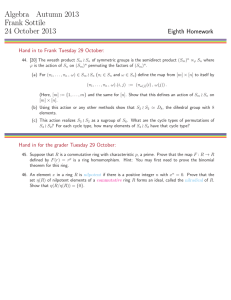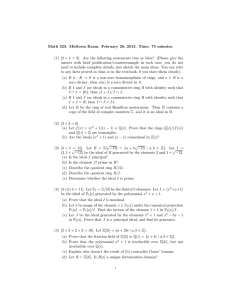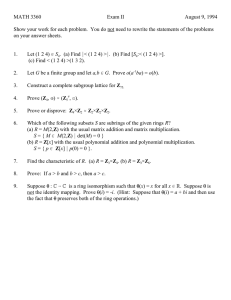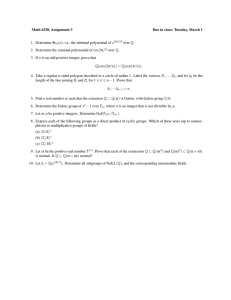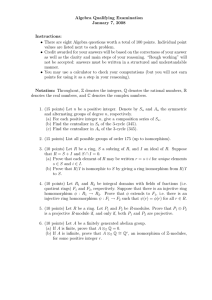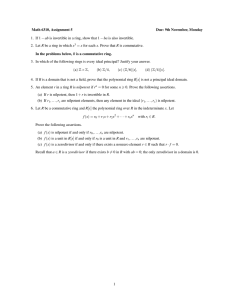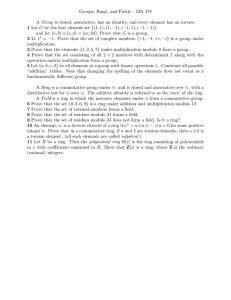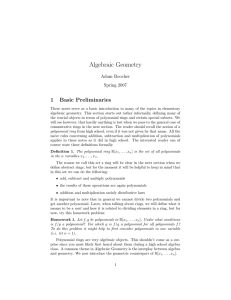University of Utah, Department of Mathematics August 2014, Algebra Qualifying Exam
advertisement
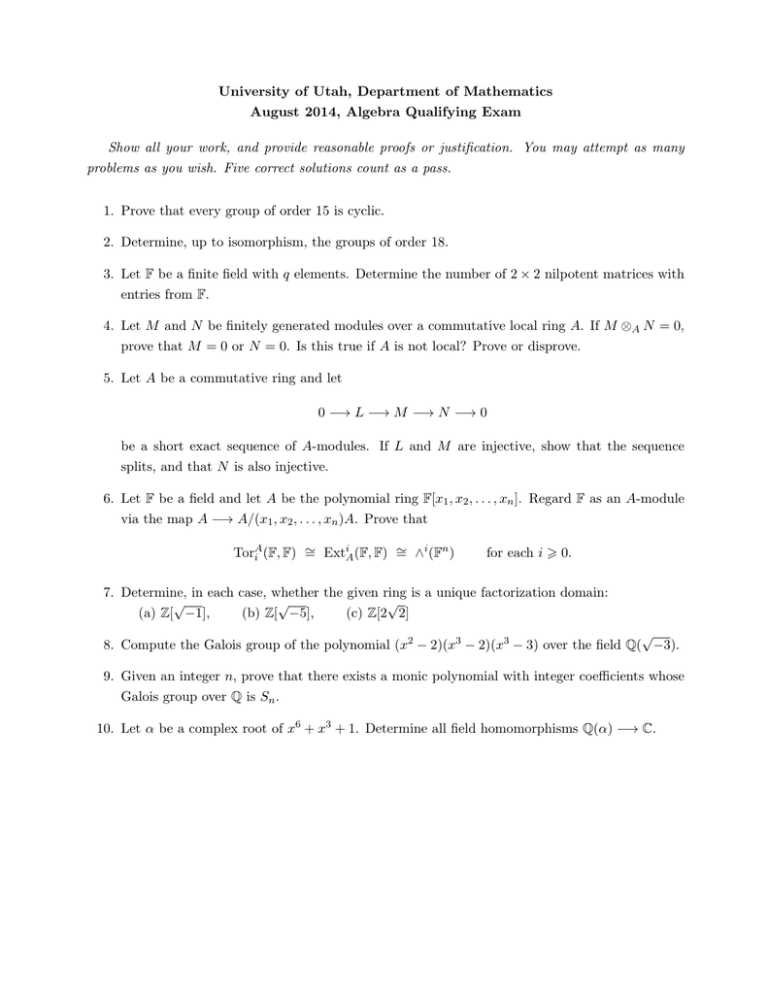
University of Utah, Department of Mathematics August 2014, Algebra Qualifying Exam Show all your work, and provide reasonable proofs or justification. You may attempt as many problems as you wish. Five correct solutions count as a pass. 1. Prove that every group of order 15 is cyclic. 2. Determine, up to isomorphism, the groups of order 18. 3. Let F be a finite field with q elements. Determine the number of 2 × 2 nilpotent matrices with entries from F. 4. Let M and N be finitely generated modules over a commutative local ring A. If M ⊗A N = 0, prove that M = 0 or N = 0. Is this true if A is not local? Prove or disprove. 5. Let A be a commutative ring and let 0 −→ L −→ M −→ N −→ 0 be a short exact sequence of A-modules. If L and M are injective, show that the sequence splits, and that N is also injective. 6. Let F be a field and let A be the polynomial ring F[x1 , x2 , . . . , xn ]. Regard F as an A-module via the map A −→ A/(x1 , x2 , . . . , xn )A. Prove that i ∼ ∼ i n TorA i (F, F) = ExtA (F, F) = ∧ (F ) for each i > 0. 7. Determine, in each case, whether the given ring is a unique factorization domain: √ √ √ (b) Z[ −5], (c) Z[2 2] (a) Z[ −1], √ 8. Compute the Galois group of the polynomial (x2 − 2)(x3 − 2)(x3 − 3) over the field Q( −3). 9. Given an integer n, prove that there exists a monic polynomial with integer coefficients whose Galois group over Q is Sn . 10. Let α be a complex root of x6 + x3 + 1. Determine all field homomorphisms Q(α) −→ C.
